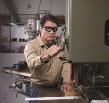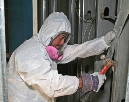
By Noor Amara
As a risk manager, safety consultant, or claims professional, you can help injured workers better understand their condition.

By David Iannelli
In extremely dirty, dusty, high-hazard industries, such as oil and gas production or heavy manufacturing, the "sealed eyewear" product category is rapidly taking center stage.

By Denise McDonald Dorman
Brisk sales and incremental innovations are the order of the day.
By Julie Charland
More than 50 percent reported discomfort, tingling, or pain if they had performed glovebox work for more than 10 years, do repetitive tasks as a primary work task, and/or work more than four hours per day in the gloveboxes.
By Barry R. Weissman
Going back to §(d)(9), we have to prevent unauthorized persons from attempting a rescue.

By Jerry Laws
Widespread managerial turnover in maritime and in the oil & gas exploration and production industry has sparked development of new training tools on coaching and mentoring.
By Tom Smith
Getting a third-party perspective can help you eradicate visual clutter, create consistency within your facility, and reduce overall costs.

By Linda J. Sherrard
Know what each employee is doing and how he/she is progressing in task management and safety.
By Nancy Westcott
And both of them add to the bottom line.

By Keith Bilger
A properly laid out workstation is crucial to a healthy work environment. Twisting, vibration, and repetitive motion have the potential for lost-time injuries, decreased production, and sour attitudes.
By Shawn M. Galloway
Never forget the criticality of integrating business thinking into the fabric of safety.
By Jerry Laws
Our final 2012 webinar reinforced the point that safety managers must use a team approach to address the potential for violence at their workplaces.
By Robert Pater
Plowing ahead without continuing to assess others' reactions often leaves them on the sidelines during an improvement process.